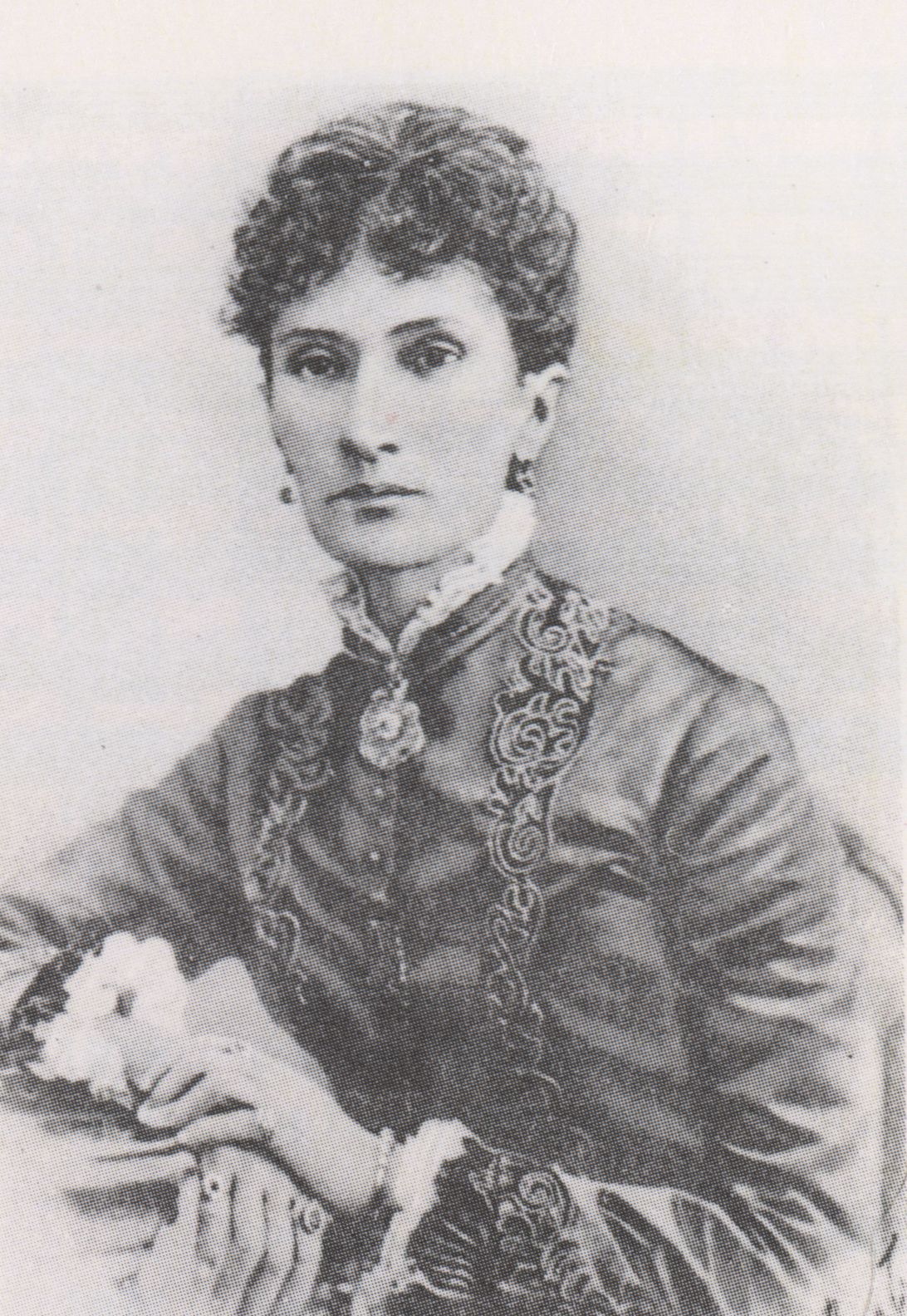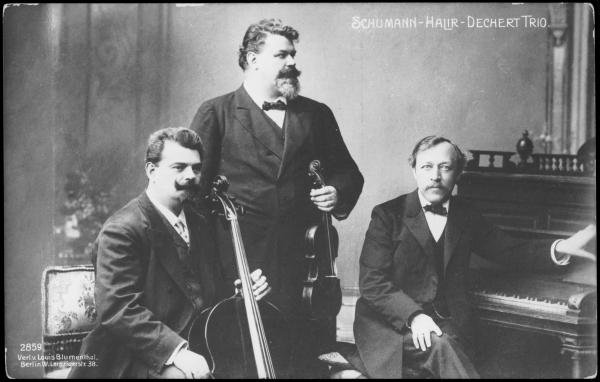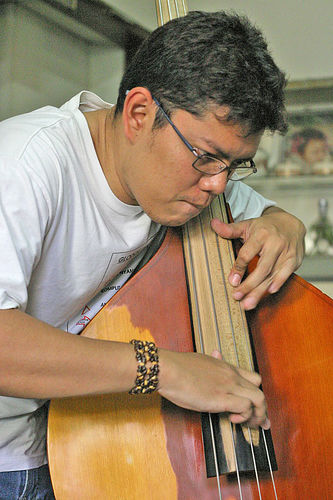|
Symphony No. 4 (Tchaikovsky)
Pyotr Ilyich Tchaikovsky's Symphony No. 4 in F minor, Op. 36, was written between 1877 and 1878. Its first performance was at a Russian Musical Society concert in Moscow on February 22 (or the 10th using the calendar of the time), 1878, with Nikolai Rubinstein as conductor. In Middle Europe it sometimes receives the nickname "Fatum", or "Fate". Composition During the composition of the symphony, Tchaikovsky wrote to his patroness, Nadezhda von Meck, that he wanted "very much" to dedicate it to her, and that he would write on it "Dedicated to My Best Friend". He had begun composing the symphony not long after Meck had entered his life. He would complete it in the aftermath of his catastrophic marriage and claimed she would find in it "an echo of your most intimate thoughts and emotions." The dedication was significant in more than one way. One important facet of the paternalistic nature of Russian society was that, in artistic patronage, patron and artist were considered equals ... [...More Info...] [...Related Items...] OR: [Wikipedia] [Google] [Baidu] |
Pyotr Ilyich Tchaikovsky
Pyotr Ilyich Tchaikovsky , group=n ( ; 7 May 1840 – 6 November 1893) was a Russian composer of the Romantic period. He was the first Russian composer whose music would make a lasting impression internationally. He wrote some of the most popular concert and theatrical music in the current classical repertoire, including the ballets '' Swan Lake'' and ''The Nutcracker'', the ''1812 Overture'', his First Piano Concerto, Violin Concerto, the ''Romeo and Juliet'' Overture-Fantasy, several symphonies, and the opera ''Eugene Onegin''. Although musically precocious, Tchaikovsky was educated for a career as a civil servant as there was little opportunity for a musical career in Russia at the time and no system of public music education. When an opportunity for such an education arose, he entered the nascent Saint Petersburg Conservatory, from which he graduated in 1865. The formal Western-oriented teaching that he received there set him apart from composers of the contemporary nati ... [...More Info...] [...Related Items...] OR: [Wikipedia] [Google] [Baidu] |
French Horn
The French horn (since the 1930s known simply as the horn in professional music circles) is a brass instrument made of tubing wrapped into a coil with a flared bell. The double horn in F/B (technically a variety of German horn) is the horn most often used by players in professional orchestras and bands, although the descant and triple horn have become increasingly popular. A musician who plays a horn is known as a list of horn players, horn player or hornist. Pitch is controlled through the combination of the following factors: speed of air through the instrument (controlled by the player's lungs and thoracic diaphragm); diameter and tension of lip aperture (by the player's lip muscles—the embouchure) in the mouthpiece; plus, in a modern horn, the operation of Brass instrument valve, valves by the left hand, which route the air into extra sections of tubing. Most horns have lever-operated rotary valves, but some, especially older horns, use piston valves (similar to a trumpet's ... [...More Info...] [...Related Items...] OR: [Wikipedia] [Google] [Baidu] |
Piccolo
The piccolo ( ; Italian for 'small') is a half-size flute and a member of the woodwind family of musical instruments. Sometimes referred to as a "baby flute" the modern piccolo has similar fingerings as the standard transverse flute, but the sound it produces is an octave higher. This has given rise to the name ottavino (), by which the instrument is called in Italian and thus also in scores of Italian composers. Piccolos are often orchestrated to double the violins or the flutes, adding sparkle and brilliance to the overall sound because of the aforementioned one-octave transposition upwards. The piccolo is a standard member in orchestras, marching bands, and wind ensembles. History Since the Middle Ages, evidence indicates the use of octave transverse flutes as military instruments, as their penetrating sound was audible above battles. In cultured music, however, the first piccolos were used in some of Jean Philippe Rameau's works in the first half of the 18th century. Sti ... [...More Info...] [...Related Items...] OR: [Wikipedia] [Google] [Baidu] |
Staccato
Staccato (; Italian for "detached") is a form of musical articulation. In modern notation, it signifies a note of shortened duration, separated from the note that may follow by silence. It has been described by theorists and has appeared in music since at least 1676. Notation In 20th-century music, a dot placed above or below a note indicates that it should be played staccato, and a wedge is used for the more emphatic staccatissimo. However, before 1850, dots, dashes, and wedges were all likely to have the same meaning, even though some theorists from as early as the 1750s distinguished different degrees of staccato through the use of dots and dashes, with the dash indicating a shorter, sharper note, and the dot a longer, lighter one. A number of signs came to be used in the late 19th and early 20th centuries to discriminate more subtle nuances of staccato. These signs involve various combinations of dots, vertical and horizontal dashes, vertical and horizontal wedges, and t ... [...More Info...] [...Related Items...] OR: [Wikipedia] [Google] [Baidu] |
Trio (music)
In music, a trio (from the Italian language, Italian) is any of the following: * a composition for three performers or three Part (music), musical parts * in larger works, the middle section of a ternary form (so named because of the 17th-century practice of scoring the contrasting second or middle dance appearing between two statements of a principal dance for three instruments) * an ensemble of three instruments or voices performing trio compositions. Composition A trio is a composition for three performers or musical parts. Works include Baroque trio sonatas, choral works for three parts, and works for three instruments such as string trios. In the 17th and early 18th century, musical genre trio sonata two melodic instruments are accompanied by a basso continuo, making three Part (music), parts in all. Because the basso continuo is usually played by two instruments (typically a cello or bass viol and a keyboard instrument such as the harpsichord), performances of trio sonata ... [...More Info...] [...Related Items...] OR: [Wikipedia] [Google] [Baidu] |
Pizzicato
Pizzicato (, ; translated as "pinched", and sometimes roughly as "plucked") is a playing technique that involves plucking the strings of a string instrument. The exact technique varies somewhat depending on the type of instrument : * On bowed string instruments it is a method of playing by plucking the strings with the fingers, rather than using the bow. This produces a very different sound from bowing, short and percussive rather than sustained. * On keyboard string instruments, such as the piano, pizzicato may be employed (although rarely seen in traditional repertoire, this technique has been normalized in contemporary music, with ample examples by George Crumb, Toru Takemitsu, Helmut Lachenmann, and others) as one of the variety of techniques involving direct manipulation of the strings known collectively as "string piano". * On the guitar, it is a muted form of plucking, which bears an audible resemblance to pizzicato on a bowed string instrument with its relatively short ... [...More Info...] [...Related Items...] OR: [Wikipedia] [Google] [Baidu] |
D-flat Major
D-flat major (or the key of D-flat) is a major scale based on D, consisting of the pitches D, E, F, G, A, B and C. Its key signature has five flats. It is enharmonically equivalent to C-sharp major. The D-flat major scale is: : Its relative minor is B-flat minor. Its parallel minor, D-flat minor, is usually replaced by C-sharp minor, since D-flat minor features a B ( B-double-flat) in its key signature making it impractical to use. C-sharp major, the enharmonic equivalent to D-flat major, has a similar problem as it contains seven sharps. Therefore, D-flat major is often used as the parallel major for C-sharp minor. (The same enharmonic situation occurs with the keys of A-flat major and G-sharp minor). For example, in his Prelude No. 15 in D-flat major ("Raindrop"), Frédéric Chopin switches from D-flat major to C-sharp minor for the middle section in the parallel minor, while in his ''Fantaisie-Impromptu'' and Scherzo No. 3, primarily in C-sharp minor, he switche ... [...More Info...] [...Related Items...] OR: [Wikipedia] [Google] [Baidu] |
A Major
A major (or the key of A) is a major scale based on A, with the pitches A, B, C, D, E, F, and G. Its key signature has three sharps. Its relative minor is F-sharp minor and its parallel minor is A minor. The key of A major is the only key where the Neapolitan sixth chord on (''i.e.'' the flattened supertonic) requires both a flat and a natural accidental. The A major scale is: : In the treble, alto, and bass clefs, the G in the key signature is placed higher than C. However, in the tenor clef, it would require a ledger line and so G is placed lower than C. History Although not as rare in the symphonic literature as sharper keys (those containing more than three sharps), symphonies in A major are less common than in keys with fewer sharps such as D major or G major. Beethoven's Symphony No. 7, Bruckner's Symphony No. 6 and Mendelssohn's Symphony No. 4 comprise a nearly complete list of symphonies in this key in the Romantic era. Mozart's Clarinet Concerto ... [...More Info...] [...Related Items...] OR: [Wikipedia] [Google] [Baidu] |
Oboe
The oboe ( ) is a type of double reed woodwind instrument. Oboes are usually made of wood, but may also be made of synthetic materials, such as plastic, resin, or hybrid composites. The most common oboe plays in the treble or soprano range. A soprano oboe measures roughly long, with metal keys, a conical bore and a flared bell. Sound is produced by blowing into the reed at a sufficient air pressure, causing it to vibrate with the air column. The distinctive tone is versatile and has been described as "bright". When the word ''oboe'' is used alone, it is generally taken to mean the treble instrument rather than other instruments of the family, such as the bass oboe, the cor anglais (English horn), or oboe d'amore. Today, the oboe is commonly used as orchestral or solo instrument in symphony orchestras, concert bands and chamber ensembles. The oboe is especially used in classical music, film music, some genres of folk music, and is occasionally heard in jazz, rock, pop, an ... [...More Info...] [...Related Items...] OR: [Wikipedia] [Google] [Baidu] |
B-flat Minor
B-flat minor is a minor scale based on B, consisting of the pitches B, C, D, E, F, G, and A. Its key signature has five flats. Its relative major is D-flat major and its parallel major is B-flat major. Its enharmonic equivalent, A-sharp minor, which would contain seven sharps, is not normally used. The B-flat natural minor scale is: : Changes needed for the melodic and harmonic versions of the scale are written in with accidentals as necessary. The B-flat harmonic minor and melodic minor scales are: : : Characteristics B-flat minor is traditionally a 'dark' key. The old valveless horn was barely capable of playing in B-flat minor: the only example found in 18th-century music is a modulation that occurs in the first minuet of Franz Krommer's Concertino in D major, Op. 80. Notable classical compositions * Charles-Valentin Alkan ** '' Prelude Op. 31'', No. 12 (Le temps qui n'est plus) ** Symphony for Solo Piano, 3rd movement: Menuet *Samuel Barber **''Ada ... [...More Info...] [...Related Items...] OR: [Wikipedia] [Google] [Baidu] |
Andantino (music)
In musical terminology, tempo (Italian, 'time'; plural ''tempos'', or ''tempi'' from the Italian plural) is the speed or pace of a given piece. In classical music, tempo is typically indicated with an instruction at the start of a piece (often using conventional Italian terms) and is usually measured in beats per minute (or bpm). In modern classical compositions, a "metronome mark" in beats per minute may supplement or replace the normal tempo marking, while in modern genres like electronic dance music, tempo will typically simply be stated in BPM. Tempo may be separated from articulation and meter, or these aspects may be indicated along with tempo, all contributing to the overall texture. While the ability to hold a steady tempo is a vital skill for a musical performer, tempo is changeable. Depending on the genre of a piece of music and the performers' interpretation, a piece may be played with slight tempo rubato or drastic variances. In ensembles, the tempo is often indic ... [...More Info...] [...Related Items...] OR: [Wikipedia] [Google] [Baidu] |

.jpg)





.jpg)